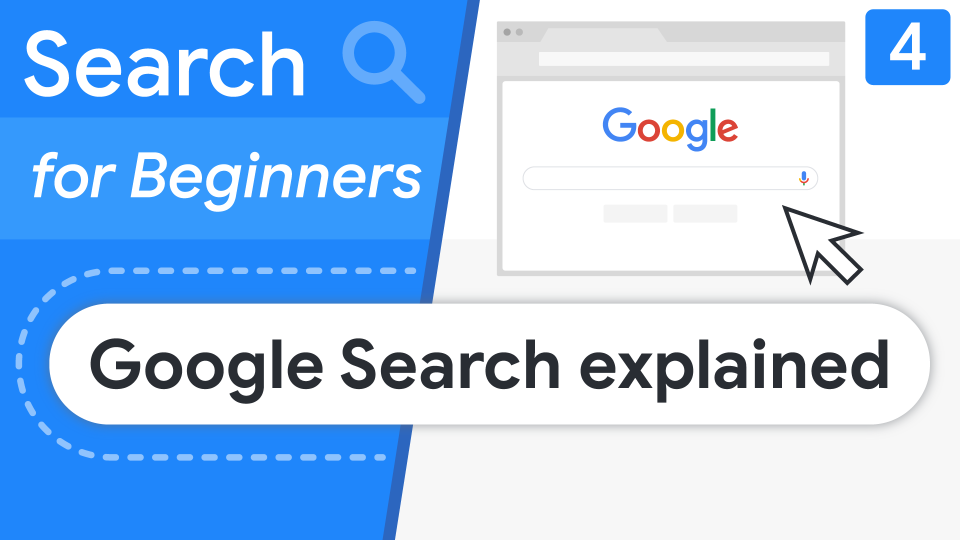A Google video explains how Research works
It almost looks like an answer to the users’ difficulties we reported a few days ago: the episode number 4 of the “Search for Beginners” series that Mountain View company published on its YouTube channel is this time dedicated to the clarification of the main doubts on how Research on Google works and, in particular, to offer simple definitions of scanning, indexing and ranking.
Useful information for all sites
Just like on previous episodes, the target mainly are online business sites, but the info on how the search engine performs its crawling to discover web pages, sort results out in the Index and then rank them in order to show them to users and possible clients can be useful to any given kind of Web activity.
How does Google Research system work
It all start from a basic notion: Google Reasearch “is a powerful tool”, that allows people to “find, share and access an almost infinite amount of contents, regardless of how or when they connect”. Therefore, “if you have an online business and you want your customers to find you”, to understand how the search engine works is key.
First of all, Google has to “realize that your business has a presence on the web”: whether it is a site, a blog, a social media profile or Google My Business listing, “Google goes through a whole journey to find your business, categorize it and show it to your potential customers“, the video reminds us.
Scanning the Web to find new contents
First fundamental step of this process is scanning: “Google constantly searches for new content to add to its huge catalogue” through an activity of discover called crawling. Generally, explains the guiding voice, “Google discovers new pages by following links from page to page”, finding new contents never seen before.
Googlebot’s intervention
Whenever Googlebot, that as we know is Google’s crawler, finds a new site “it has to understand what the content is all about”: this process is called indexing. Briefly, this means that “just as you would organize the inventory of your store, whether it’s shoes, sweathers or dresses, Google analyzes the content of your page and saves these information to its Index“, that is considered the biggest database in the whole world.
Third step: ranking
Once completed the first two technical processes, what happens next that “Google has find your website and Googlebot knows that you have an online shop that sells clothes”? Now it’s time to talk about ranking: whenever a user launches a search query, Google’s systems run through hundreds of billions of web pages within the search index, looking for the most useful and relevant ones in a matter of fraction of a second.
A classic research generates thousands, or even millions of web pages providing potentially relevant information: Google’s job is to “determine the highest quality and most relevant answers, returning the content providing the best user experience and the most appropriate results”.
Ranking and user factors for the ranking
Alongside the classic ranking factors, there are other elements impacting on the determination of results such as “the user’s location, language and device type”, as the video says. For instance, the research about “buying a nice shirt” could show very different results for an user searching from New York compared to the one living in Miami: in particular, in the first case it will need a long-sleeved shirt, while in Florida would probably be more useful a lighter shirt.
Difference between organic and paid results
What we all need to remember, Big G keeps on stressing, is that “Google Search results are organic and generated through sophisticated algorithms that make thousand calculations for each search in a fraction of a second, based only on the relevance of a page to a user”.
And so, “Google never accepts payments from anyone to be included in organic search results or to alter a page ranking in any way”, it explains in the video, perhaps also to directly answer the now well-known Wall Street Journal’s attack.
Different is the case of in-SERP ADS, the kind of advertising appearing among search results but that “they are clearly labeled and so easy to distinguish from the rest of the page”, they tell us from Mountain View (but maybe the message is not that clear to everyone, as we were saying some days ago!).
A process only lasting a few seconds
Therefore, at last: Google explores the web in order to find new contents, indexes those contents categorizing them as a catalogue and its ranking systems analyze the index to only show the most relevant results to users. Then it is the SEO‘s turn to get involved so to try and enhance the ranking on Google from a strategic and business-friendly perspective!




